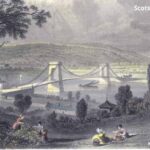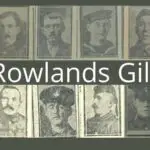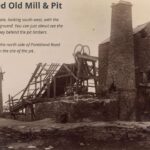Enjoy a glimpse of history through old images of Ryton, in Tyne & Wear, North East England, UK.
Ryton’s economy was built upon agriculture and coal mining, with the first known records of coal being shipped to London dating back to 1367.
With the rise of the Industrial Revolution, it became a popular location for those looking to escape to a cleaner and more pleasant environment, yet within easy reach of the urban areas.
Holy Cross Church
Holy Cross Church in Ryton was completed around 1220, and is today a Grade I listed building.
It has a striking 13th century broad spire, and inside the church is found a 13th century marble effigy of a deacon holding a book, made of Frosterly marble.
It was probably built on the site of the bailey in a Saxon motte and bailey castle, positioned close to the tidal ford across the River Tyne. Glaswegian soldiers may have been stationed here, during the occupation of Northumberland by King David of Scotland.
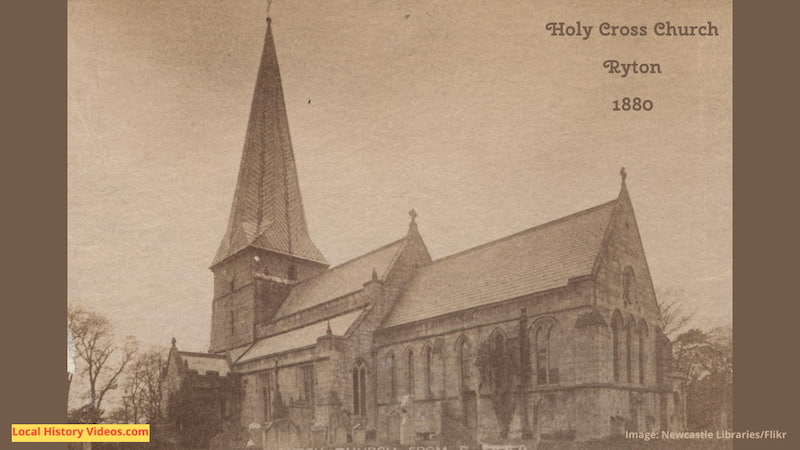
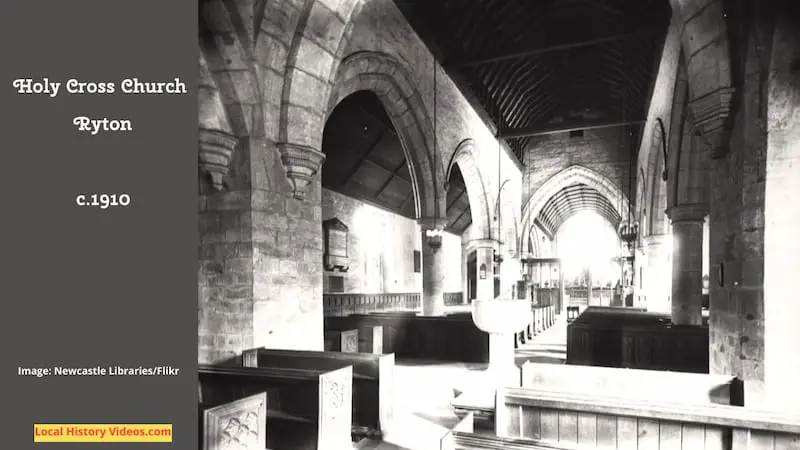
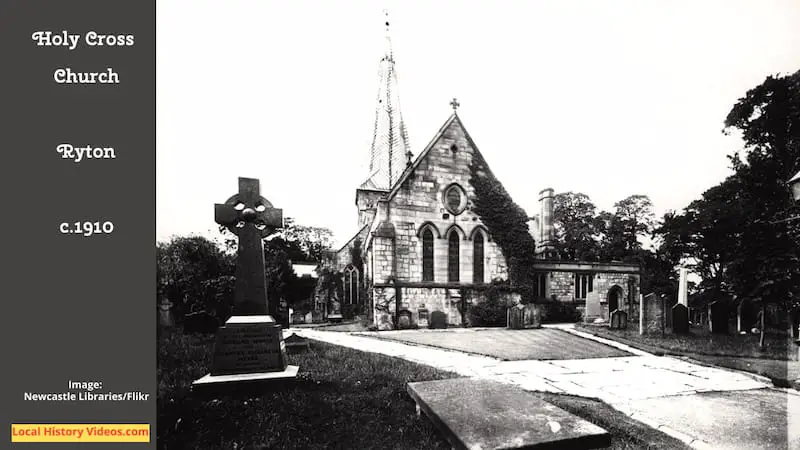
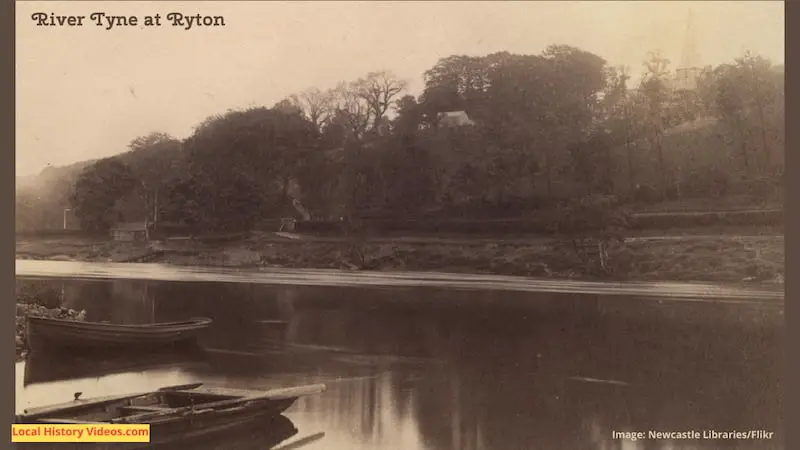
Holy Cross Rectory
Holy Cross Rectory was owned by the Holy Cross Church.
Originally a Bishop’s Palace, the house is built on an H-plan, with a medieval core and Queen Anne façade. The entrance is framed by a broken scrolled pediment from 1709, within which are set the arms of Bishop Lord Crewe. He was the last Prince Bishop, with news of his excesses having reached the ears of a displeased Queen Anne.
The two carved stone crosses at the apex of the gables are dated 1710 and the chimney stacks are of a rare octagonal design.
Inside, are an elaborate Baroque oak staircase, handsome wainscotting and exquisite scrolled door casings, folding shutters, and 15th-century stone mullion windows to the rear of the house.
The Grade II listed house was divided in two during the latter 20th century, with the principal rooms incorporated into The Old Rectory. Rectory House was the smaller property, created out of the original service areas and stable block.
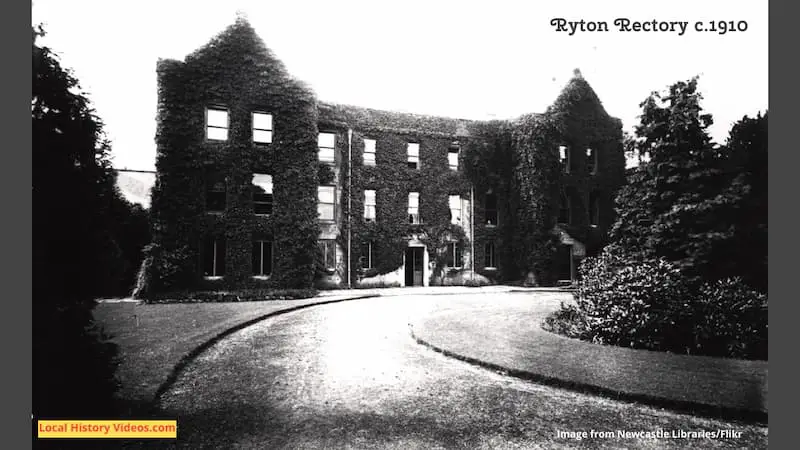
The Village Cross
In 1795, a village cross was erected in Ryton by Thomas Chancer, a well known local mason.
It is believed the site once held an older cross, because Ryton cross was used for preaching by Charles Wesley in October 1742, and by John Wesley in June 1757.
Made of sandstone, the monument is Listed Grade II as a scheduled monument, being the focal point of the Ryton Hirings, the site where John and Charles Wesley preached, and an example of a community cross which were plentiful before the Reformation changed attitudes to such monuments.
The cross was conveninetly located on the village green, next to the public house, the church and churchyard, and close to the shops.
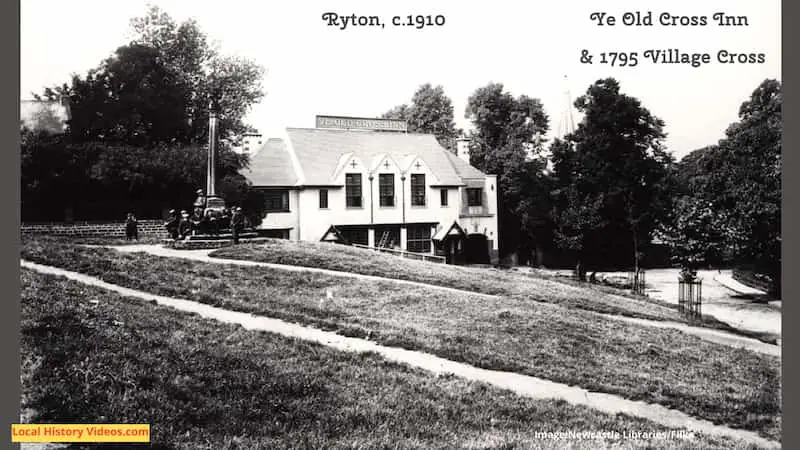
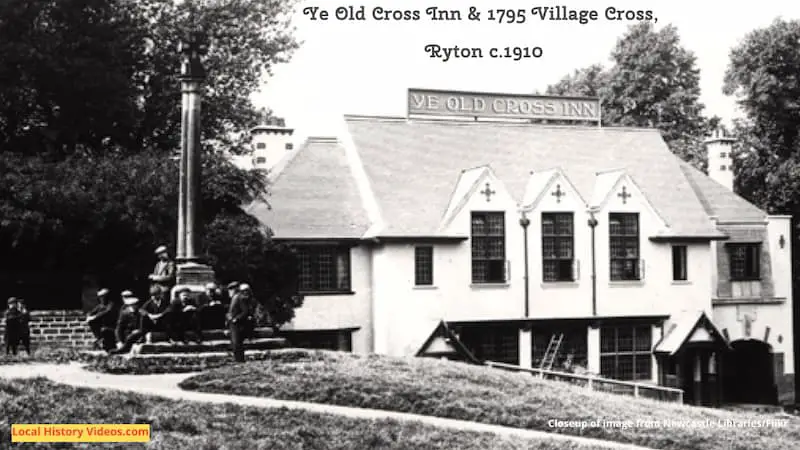
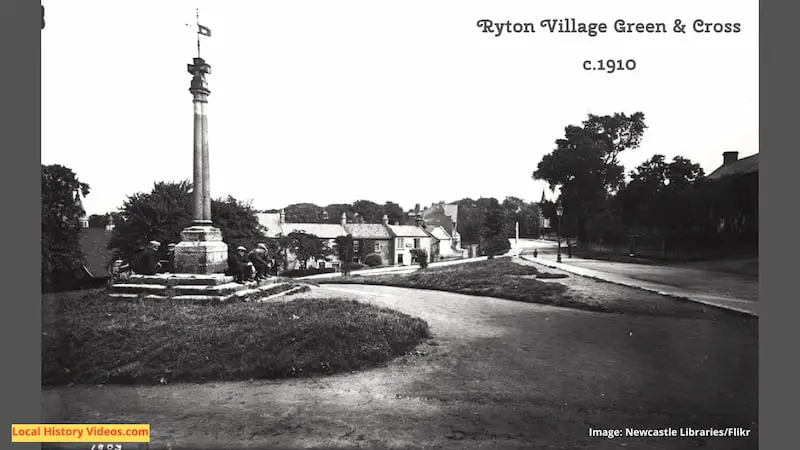
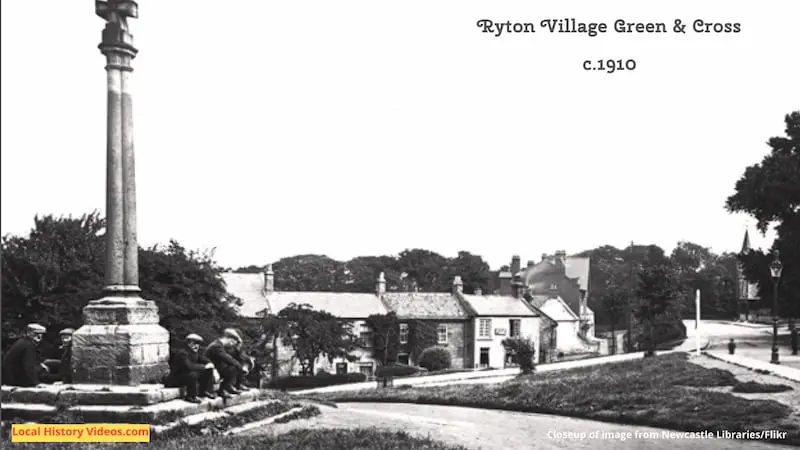
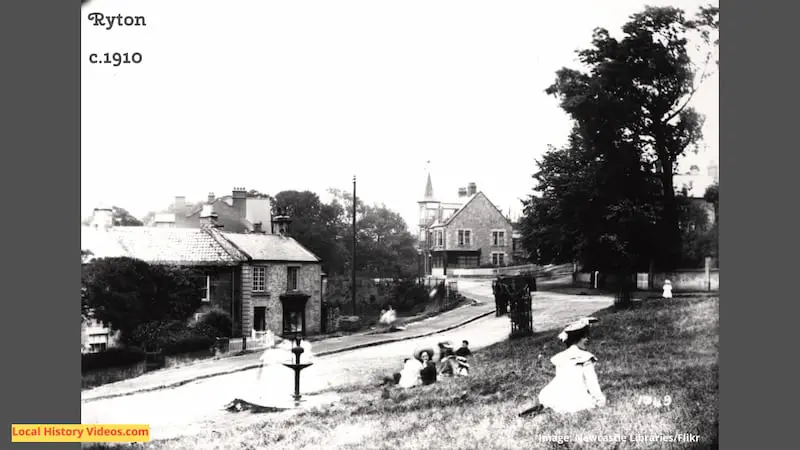
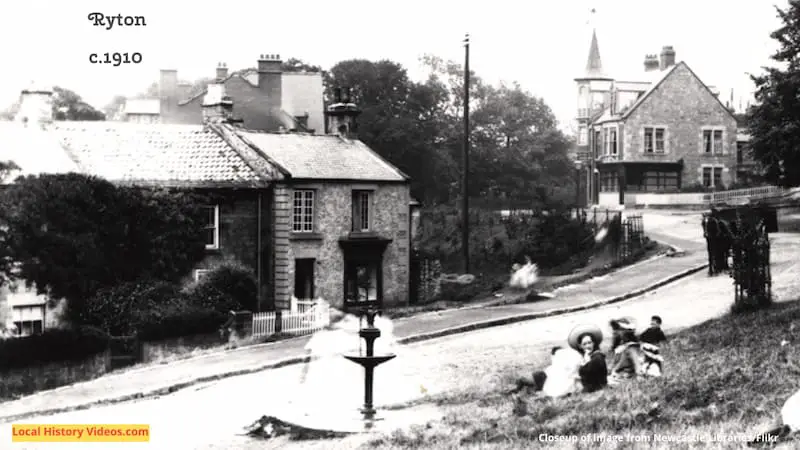
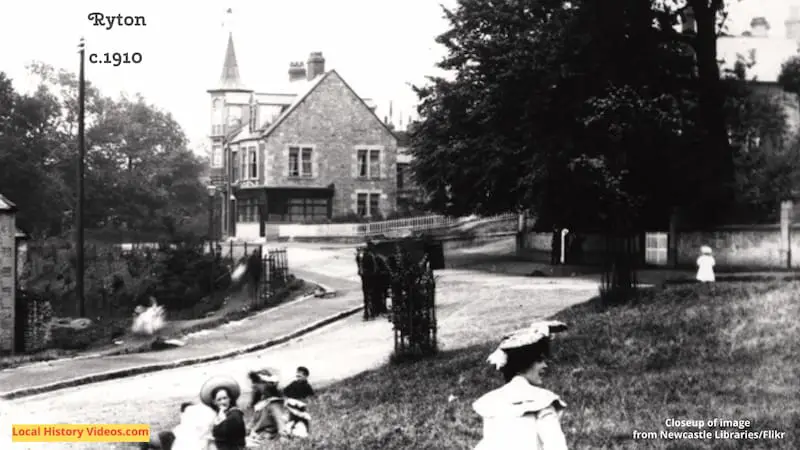
Methodists
Ryton cross was used for preaching by Charles Wesley in October 1742, and by John Wesley in June 1757, so there have been Methodists in the village since it was a revival movement in the Church of England, and continued into the era when it became a separate denomination.
The Ryton Methodist Wesleyan Chapel was photographed around 1910 with a collection of women and children in front of it, possibly the Sunday School.
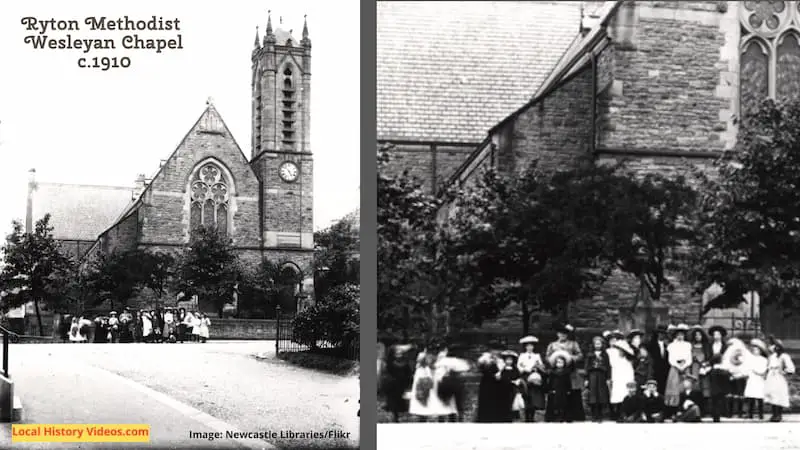
Ryton Post Office
This photograph from around 1910 shows the post office located in a portion of the Grocery and Confectioner’s shop owned by J.A. Thomson.
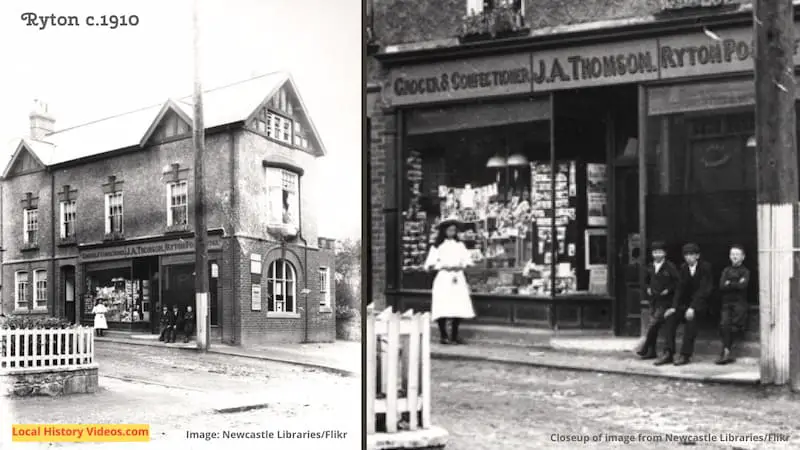
Ryton Hotel
The Ryton Hotel’s large building still remains, although by September 2016 the property was empty. Permission was granted to turn it into three two-bed apartments and three ground-floor retail units, supported by the North East Property Fund.
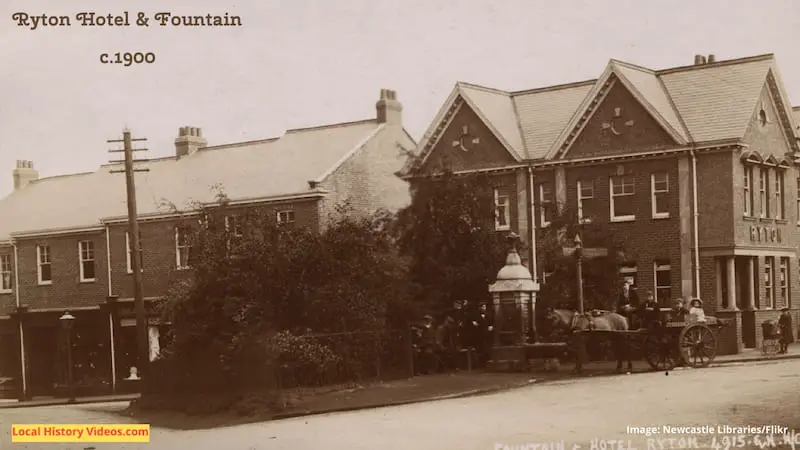
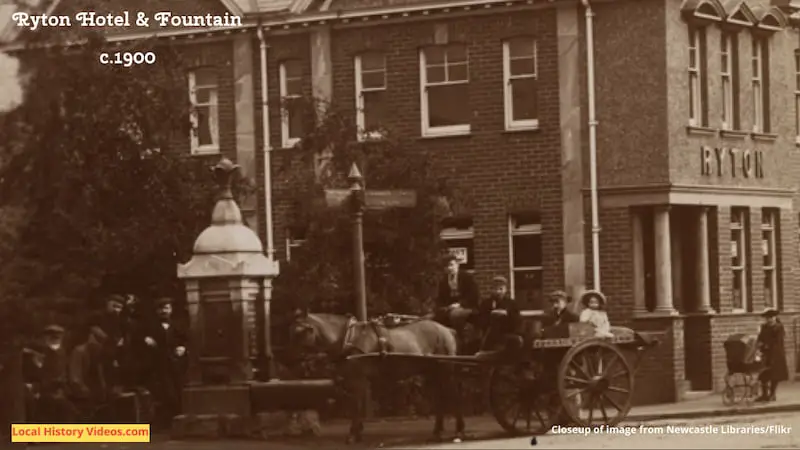
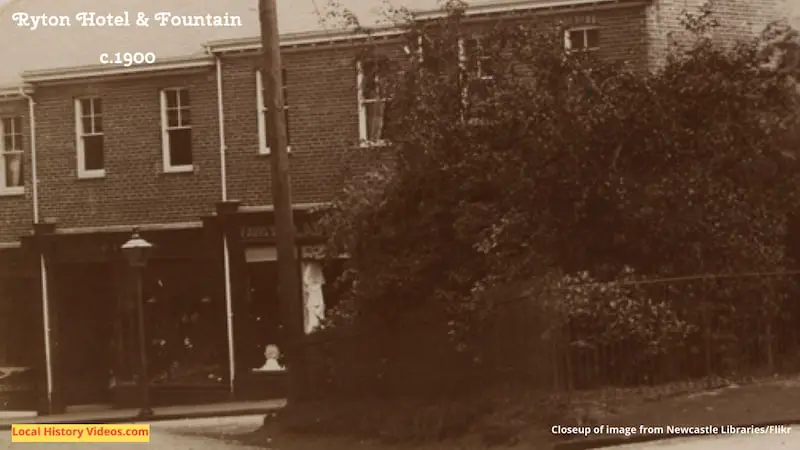
Ryton Willows
Ryton Willows is a popular leisure area today, with walkers, dog owners, cyclists, runners and families all enjoying the open space next to the River Tyne.
Back in the Edwardian era, the Willows also hosted a mini fairground, with ‘shuggy boats’, roundabouts, and a cafe.
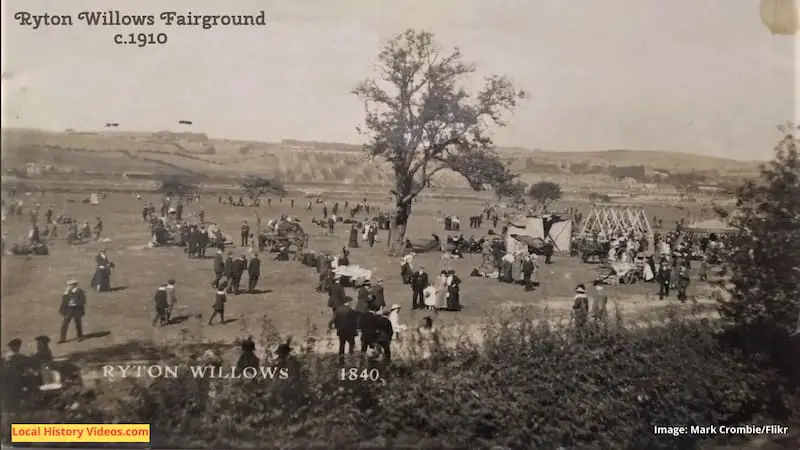
Ryton Centenary 1963
Ryton Urban District Council celebrated its centenary in 1963, which included special events and a grand parade, filmed by local resident Jack Teasdale.
Includes hundreds of local people, with images clear enough to recognise anyone you ay have known. Also several homes in the background.
Ryton Centenary 1963 – BlaydonAces on YouTube
The 1990s
As this photo from the 1990s shows, bedding plants were the cornerstone of public places. I’ve added a closeup because the Ryton Hotel is in the background, 80 years later than the photo of the same establishment shown further up this page.
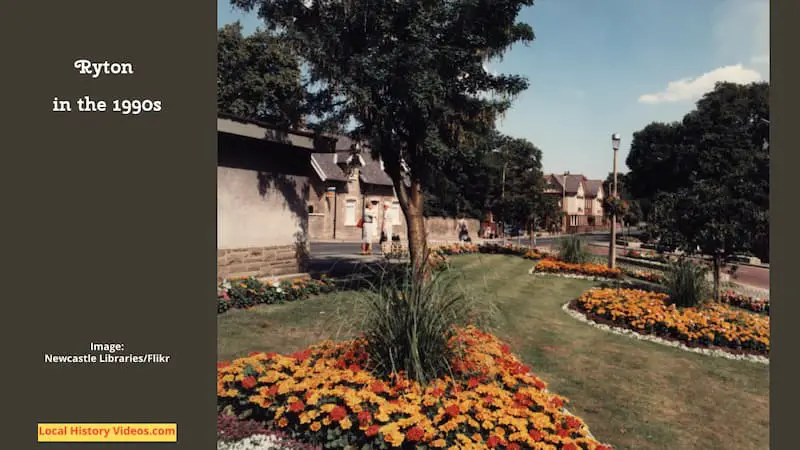
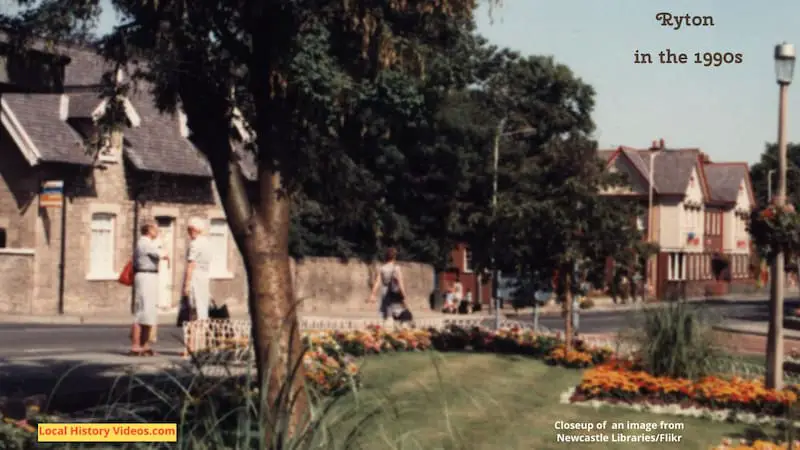
Jonas Brothers (2009)
Thorpe Academy is named after Charles Thorpe, the Rector of Holy Cross Church, who established a ‘penny bank’ for low income households in 1815 in Ryton’s White House, and later became the Archdeacon of Durham and then the first warden of the University of Durham.
He was also a conservationist, who planted Ryton’s churchyard with oak, sweet chestnut and beech trees, and arranged for his family to buy the Farne Islands, employing a wildlife warden to protect threatened bird species.
On 18th November 2009, Jonas Brothers performed at Ryton Comprehensive (now Thorpe Academy).
This is a quick clip of them signing autographs.
Meeting the Jonas Brothers at Ryton Comprehensive School in Gateshead 18/11/09 – CharlotteMay25
The Post Office Directory of Durham and Northumberland
by Kelly and Company
Published in 1879



More about Tyne & Wear
- A Brief History of Scotswood Bridge (With Old Photos & Film)Glimpse history through old images of Scotswood Bridge, which links the West End of Newcastle and the western fringes of Gateshead.
- A Glimpse of History at Rowlands GillA glimpse of history at Rowlands Gill, in North East England.
- Chirton, North East EnglandEnjoy a glimpse of history about Chirton in North Shields, Tyne & Wear, North East England, UK.
- Cowgate, Newcastle Upon Tyne: History in Old ImagesEnjoy a glimpse of history through old images of Cowgate, in Newcastle upon Tyne, Tyne & Wear, England, UK.
- Coxlodge, Newcastle upon TyneEnjoy a glimpse of history about Coxlodge in Newcastle upon Tyne, Tyne & Wear, North East England, UK.
- Dinnington, Newcastle upon TyneEnjoy a glimpse of history about Dinnington in Newcastle upon Tyne, Tyne & Wear, North East England, UK.
- Earsdon, North TynesideEnjoy a glimpse of history about Earsdon in North Tyneside, Tyne & Wear, North East England, UK.
- East Boldon, West Boldon, and Boldon CollieryEnjoy a glimpse of history about the Boldons in South Tyneside, Tyne & Wear, England, UK.
- East Rainton, SunderlandEnjoy a glimpse of history about East Rainton in Sunderland, Tyne & Wear, England, UK.
- Eighton Banks, GatesheadEnjoy a glimpse of history about Eighton Banks in Gateshead, North East England, UK.

